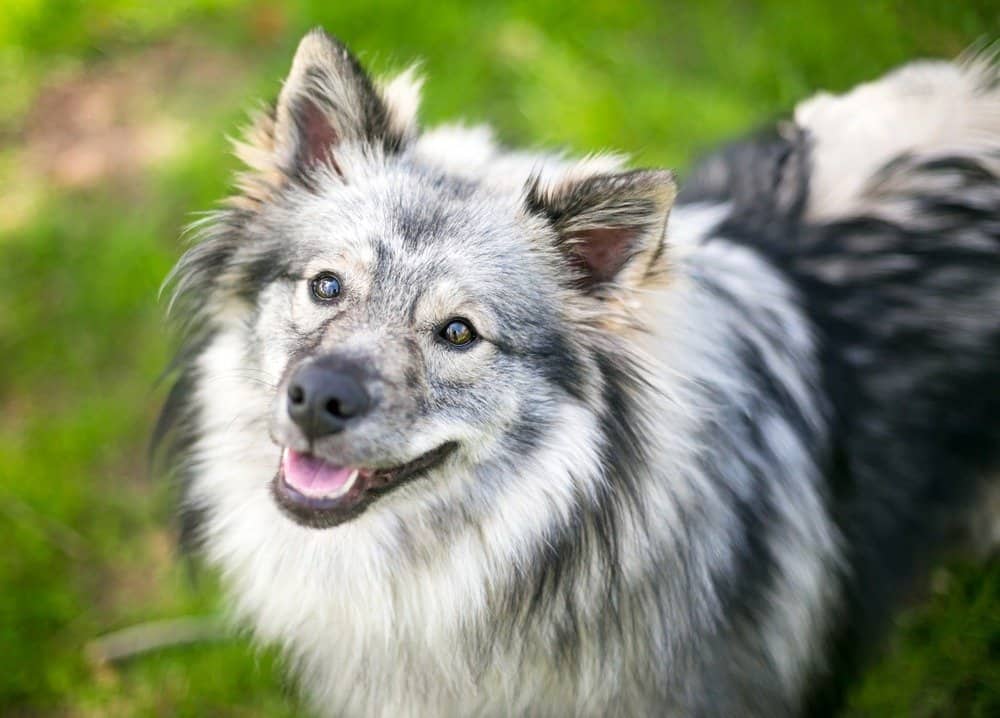Originating in the Netherlands, the keeshond is an arctic Spitz-type breed with a coat thick enough to withstand freezing temperatures. While they were primarily bred as companions, these fluffy canines turned out to be incredible watchdogs. But it’s their long, fluffy, double-layered coat that makes these dogs so popular. Unfortunately, they are not hypoallergenic, so people with allergies should not get a keeshond. Furthermore, if you don’t have time to groom their long fur, this is not the breed for you. According to the American Kennel Club, Keeshonde come in six standard colors. This article will list the various Keeshond colors from rarest to most common.
Keeshond Colors
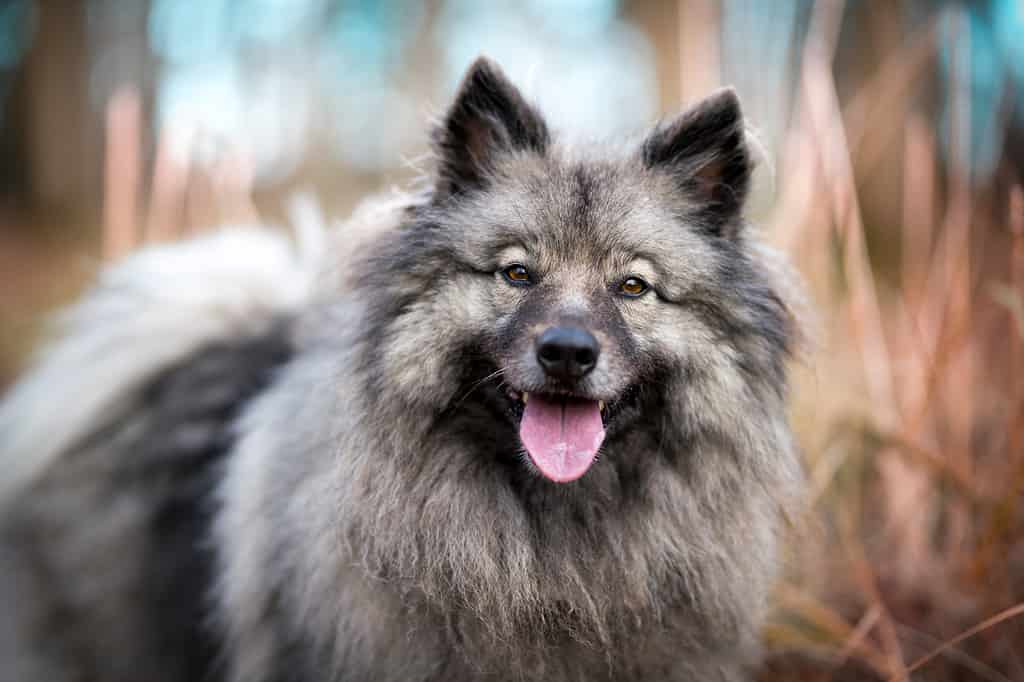
Typically, their undercoats are cream or pale gray, while their outer coats have black-tipped fur, creating the shading these dogs are so well-known for.
©stockfotocz/iStock via Getty Images
The keeshond’s coat is a mixture of black, gray, and cream, varying from light to dark. Typically, their undercoats are cream or pale gray, while their outer coats have black-tipped fur, creating the shading these dogs are so well-known for. Furthermore, their ears and muzzles are usually dark in color. However, the puppy’s markings are less vivid. The American Kennel Club recognizes six standard colors, listed below.
Keeshond Colors
The keeshond’s coat is a mixture of black, gray, and cream, varying from light to dark. Typically, their undercoats are cream or pale gray, while their outer coats have black-tipped fur, creating the shading these dogs are so well-known for. Furthermore, their ears and muzzles are usually dark in color. However, the puppy’s markings are less vivid. The American Kennel Club recognizes six standard colors, listed below.
Wolf Gray and Black
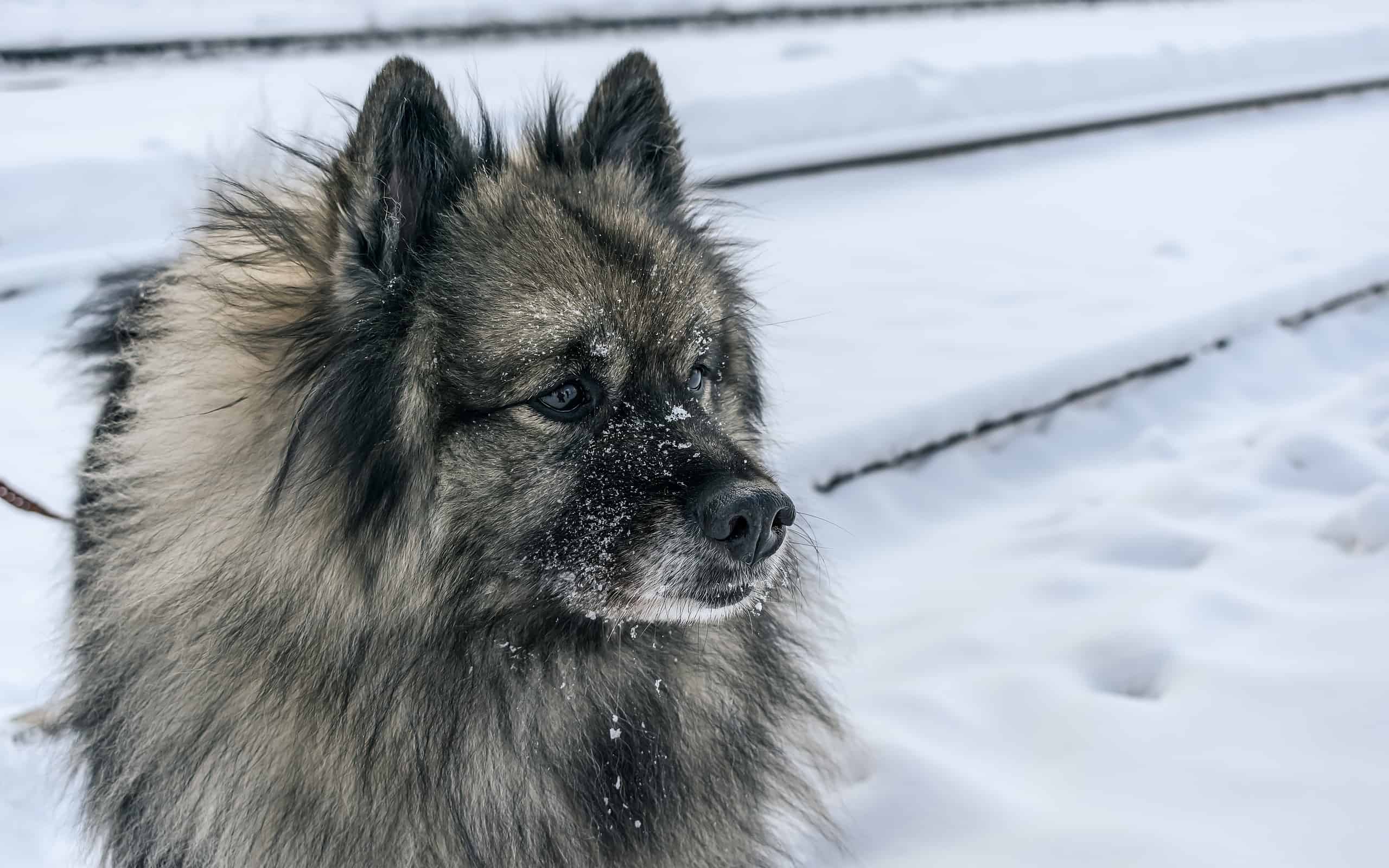
When the base color is gray-blue, and the tips of the fur are black, creating incredible shading and markings.
©Nikolay Chekalin/iStock via Getty Images
The wolf gray and black color is the rarest. This is when the base color is gray-blue, and the tips of the fur are black, creating incredible shading and markings.
Silver and Black
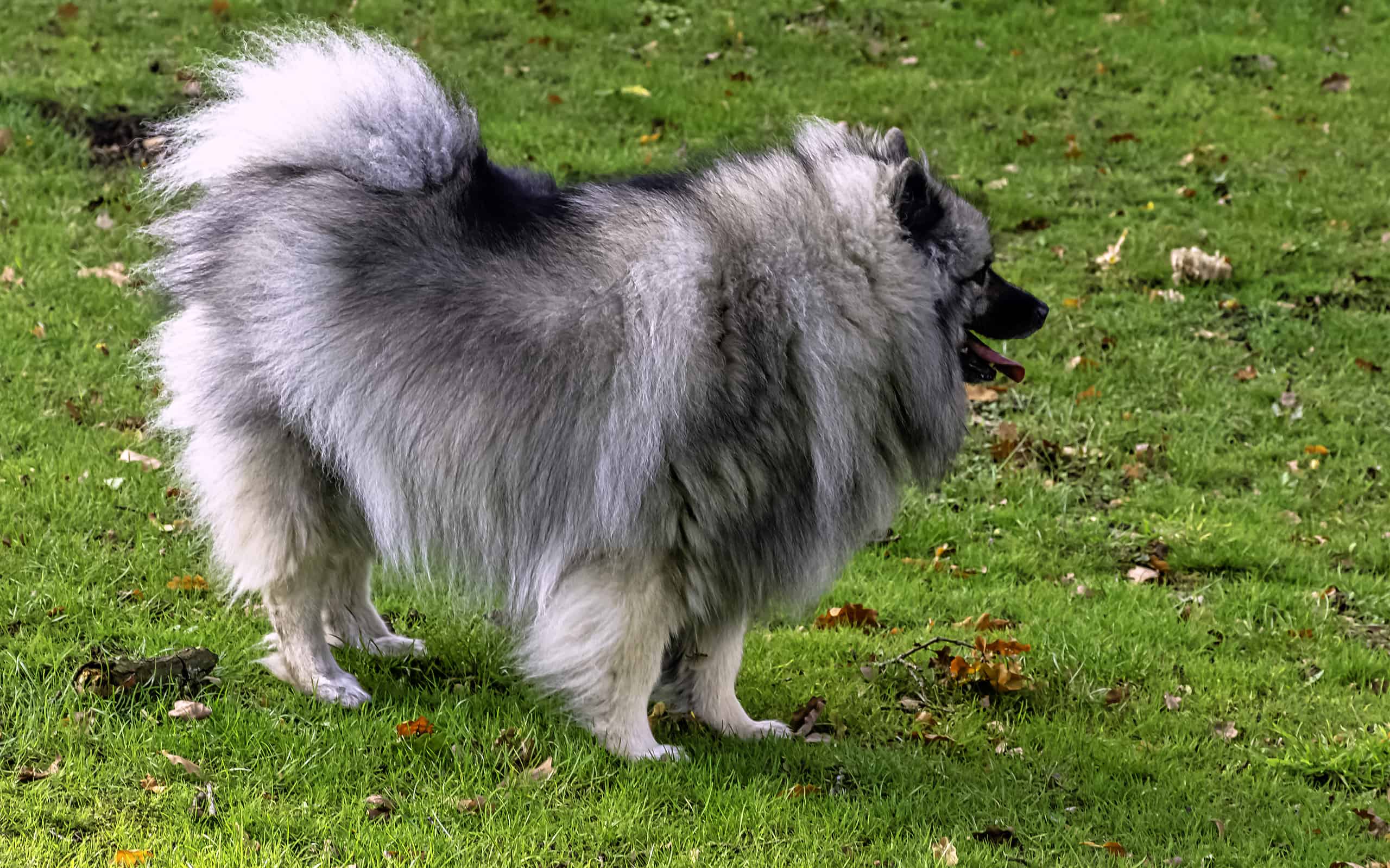
When the base color is silver, with black markings on its face, back, and ears and black-tipped fur.
©Rott70/iStock via Getty Images
The silver and black keeshond color is also very rare. This is when the base color is silver, with black markings on its face, back, and ears and black-tipped fur.
Gray Silver and Black
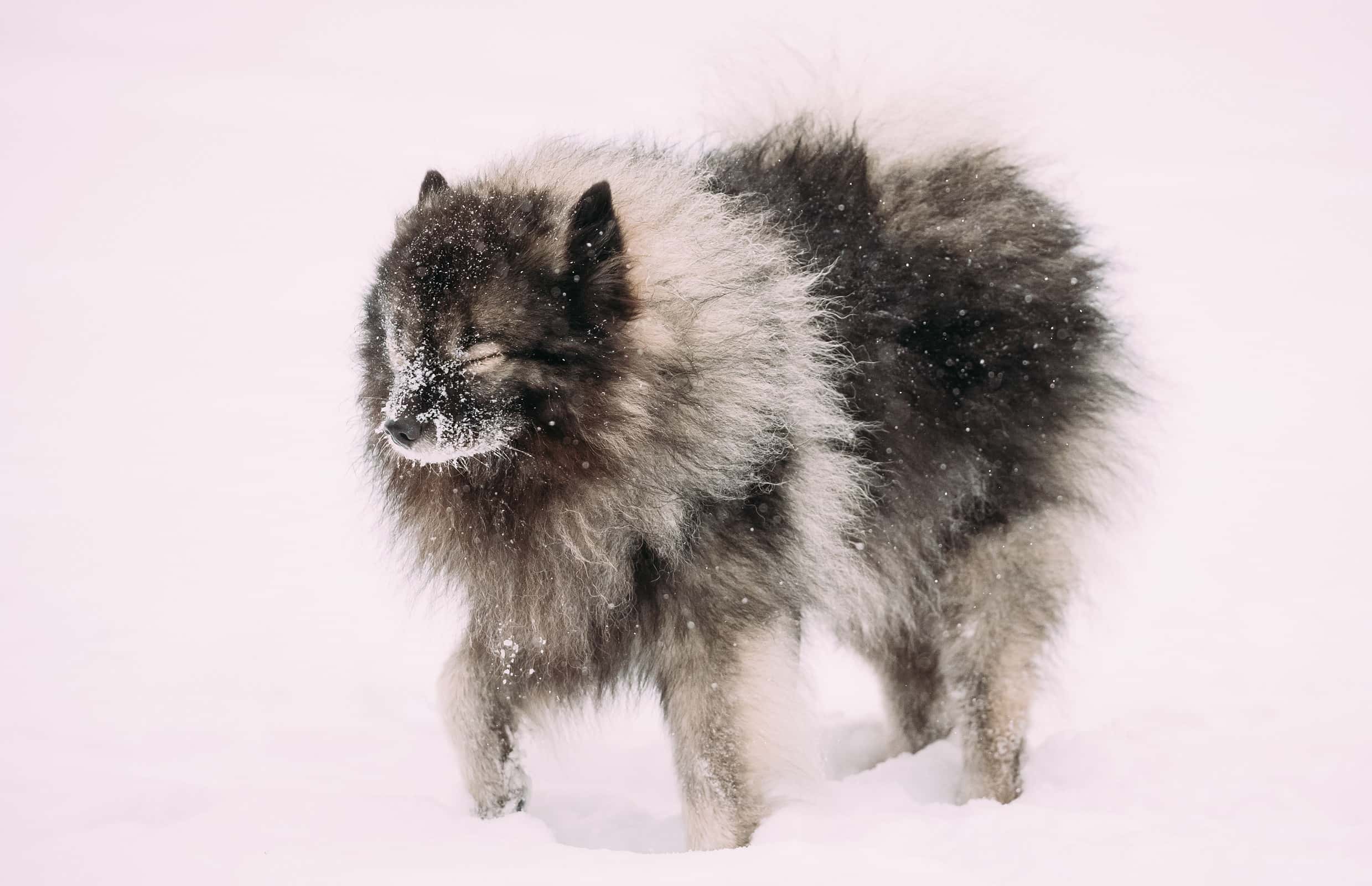
This tri-colored keeshond has a gray and silver base coat with black markings and black-tipped fur.
©bruev/iStock via Getty Images
This tri-colored keeshond has a gray and silver base coat with black markings and black-tipped fur.
Gray Cream and Black

The gray cream and black keeshond has the most amazing coloring, with a gray base coat, cream fore and back legs, and black markings on its back, face, and ears.
©DevidDO/iStock via Getty Images
The gray cream and black keeshond has the most amazing coloring, with a gray base coat, cream fore and back legs, and black markings on its back, face, and ears. Furthermore, it has black-tipped fur.
Gray and Black
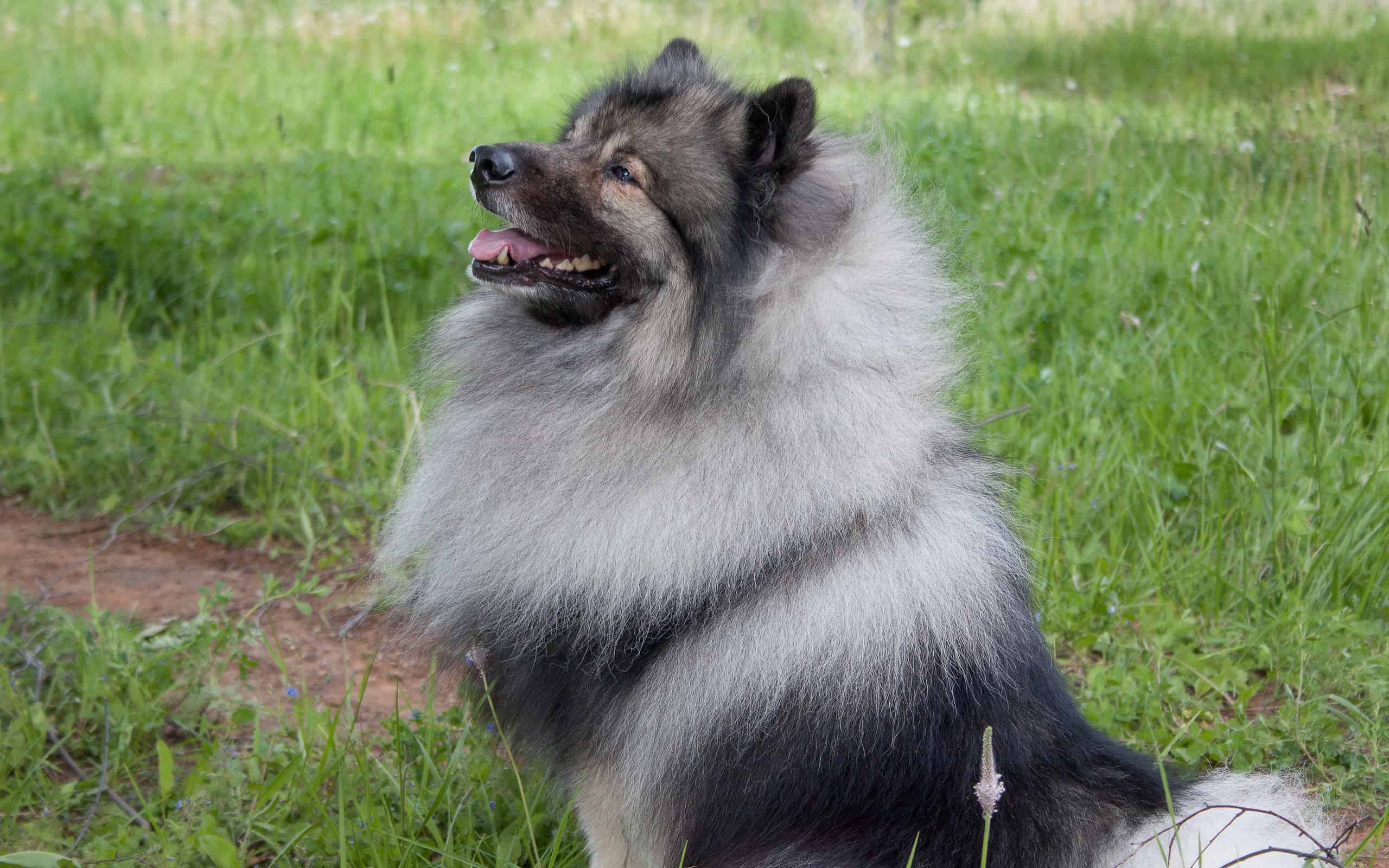
The gray and black keeshond is one of the more common colors, with a light gray base coat, black-tipped fur, and black markings all over the body.
©SergeyTikhomirov/iStock via Getty Images
The gray and black keeshond is one of the more common colors, with a light gray base coat, black-tipped fur, and black markings all over the body.
Black and Silver
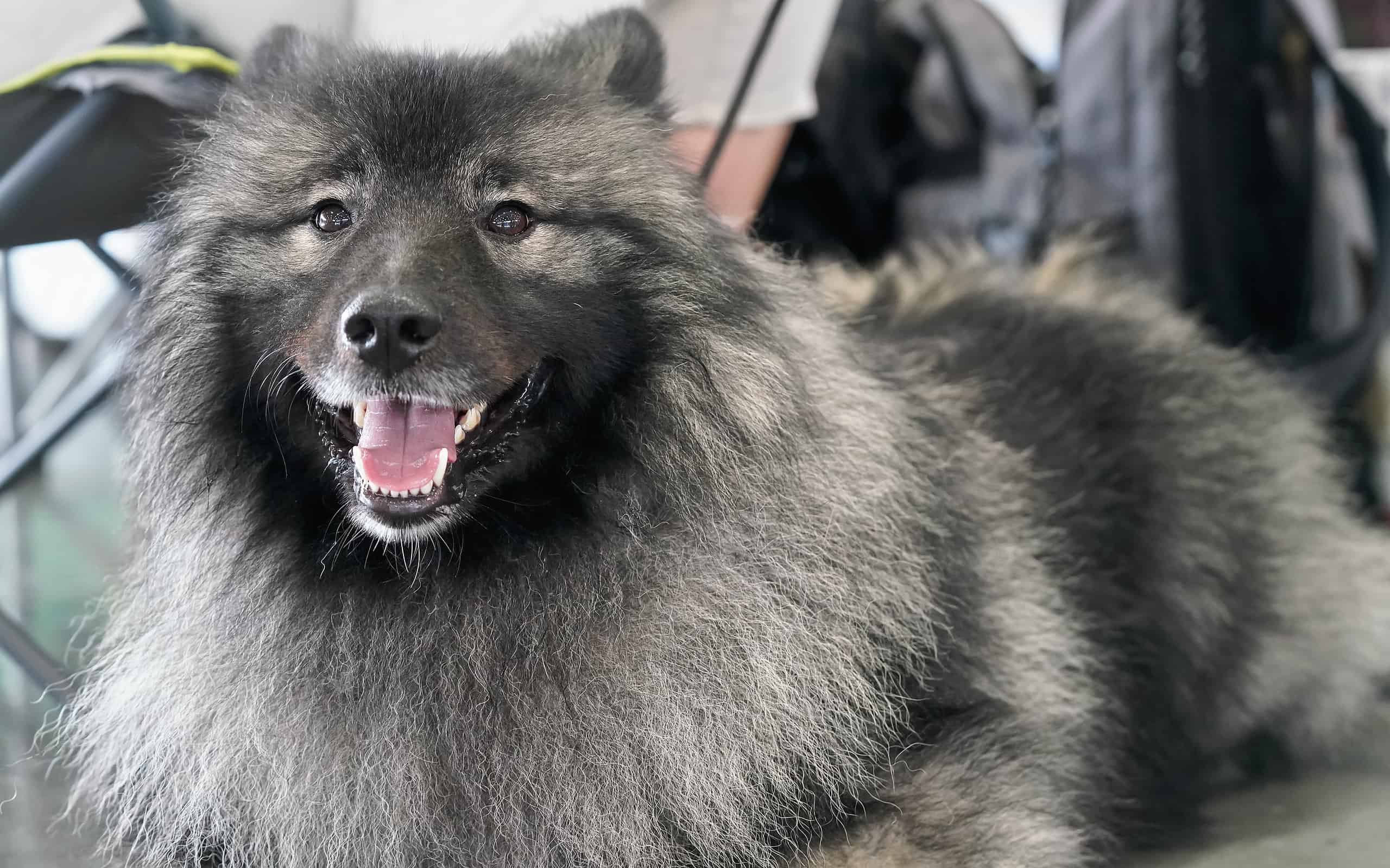
The coloring can vary as some are more black with small portions of silver, while others are more silver with small patches of black.
©Lubo Ivanko/iStock via Getty Images
The black and silver keeshond is the most common color. However, the coloring can vary as some are more black with small portions of silver, while others are more silver with small patches of black.
Keeshond Size
The keeshond is a medium-sized dog. Males measure around 18 inches tall and weigh about 45 pounds, while females grow to approximately 17 inches tall and weigh about 35 pounds.
Keeshond Personality
While the keeshond makes a good watchdog, they are mainly bred as companions as they do not have any desire for special jobs, and they are not hunters. However, they are very intelligent, which makes them easy to train. But their intelligence makes them slightly mischievous. But, despite their rebellious streak, they are generally very obedient once trained. These dogs are alert, boisterous, and full of personality. They are also very happy and usually show their enthusiasm by spinning in circles. But, if you want a well-rounded keeshond, be sure to socialize them from a young age by exposing them to new sounds, sights, people, animals, and experiences. Furthermore, you can enroll your keeshond in puppy kindergarten classes, invite guests over regularly, take it to busy parks, or on a leisurely walk to socialize.
Keeshond Health
The keeshond is usually a healthy dog. Unfortunately, like all breeds, they are prone to certain health issues. However, just because they are susceptible to specific conditions doesn’t mean they will get them. But nonetheless, it’s still important to learn about these health issues so you know what to do if they arise. These health conditions include:
Hip Dysplasia
This condition is inherited through genetics. It occurs when the thighbone doesn’t fit properly into the socket. Sometimes, it is challenging to diagnose as many dogs don’t show any signs of discomfort. However, other dogs may display outward signs and pain. If left untreated, arthritis will set in as the dog gets older.
Diabetes
Unfortunately, the keeshond is susceptible to diabetes and cannot regulate blood sugar levels. Dogs with diabetes will usually eat a lot but won’t gain weight because the body is not using the food properly. Other symptoms include extreme thirst, excessive urination, weight loss, and increased appetite. Your dog can still live a long life with diabetes when their diet is controlled and with insulin administration.
Addison’s Disease
When your dog produces insufficient amounts of adrenal hormones, it can cause a serious condition called Addison’s disease or hypoadrenocorticism. Symptoms of this terrible condition include vomiting, suppressed appetite, and weakness. However, it is very easy to misdiagnose this condition because its symptoms are similar to many other illnesses. But, as your dog gets more stressed, the signs become more prominent. Also, stress or high potassium levels can interfere with heart function, causing shock and death.
Cataracts
Keeshonde are susceptible to cataracts, which cause opacity on the lenses of the eyes. This results in poor vision and a cloudy appearance. While cataracts mostly occur in older dogs, they can be surgically removed to improve sight.
Patellar Luxation
Patellar luxation is a common problem in smaller dogs. It is also known as slipped stilfes. This happens when the knee joint slides in and out of place, which can be very painful. While this condition can be crippling, many canines live relatively normal lives.
Progressive Retinal Atrophy
PRA, or progressive retinal atrophy, is a family of eye diseases that cause the gradual deterioration of the retina. One of the earliest signs of PRA is night blindness, but as it progresses, your dog will lose their eyesight completely. However, if you keep your dog’s surroundings the same, they adapt well to having limited or no vision.
Hypothyroidism
This condition affects the thyroid gland and may cause diseases like epilepsy, obesity, alopecia, hyperpigmentation, lethargy, pyoderma, and other skin issues. But luckily, you can treat it with the proper diet or with medication.
Epilepsy
While epilepsy is often inherited, it can also occur randomly in some dogs. This neurological condition causes mild or extreme seizures, which can make your dogs display odd behavior. It’s very difficult to watch your dog go through an epileptic fit, but luckily, many people with seizures have been cured with the right medication.
Ready to discover the top 10 cutest dog breeds in the entire world?
How about the fastest dogs, the largest dogs and those that are -- quite frankly -- just the kindest dogs on the planet? Each day, AZ Animals sends out lists just like this to our thousands of email subscribers. And the best part? It's FREE. Join today by entering your email below.
Thank you for reading! Have some feedback for us? Contact the AZ Animals editorial team.

